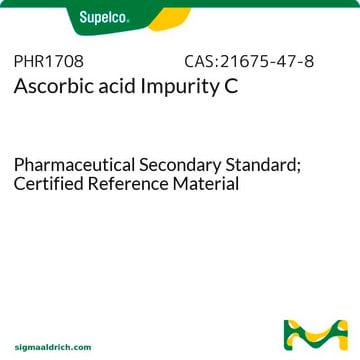W200300
Acetaldehído solution
natural, 50 wt. % in ethanol
About This Item
Productos recomendados
grado
natural
cumplimiento norm.
FDA 21 CFR 117
Formulario
liquid
concentración
45.00-55.00% (titration by hydroxylamine)
50 wt. % in ethanol
índice de refracción
n20/D 1.39 (lit.)
densidad
0.868 g/mL at 20 °C
0.784 g/mL at 25 °C (lit.)
aplicaciones
flavors and fragrances
Organoléptico
ethereal
temp. de almacenamiento
2-8°C
cadena SMILES
[H]C(C)=O
InChI
1S/C2H4O/c1-2-3/h2H,1H3
Clave InChI
IKHGUXGNUITLKF-UHFFFAOYSA-N
¿Está buscando productos similares? Visita Guía de comparación de productos
Palabra de señalización
Danger
Frases de peligro
Consejos de prudencia
Clasificaciones de peligro
Carc. 1B - Eye Irrit. 2 - Flam. Liq. 2 - Muta. 2 - STOT SE 3
Órganos de actuación
Respiratory system
Código de clase de almacenamiento
3 - Flammable liquids
Clase de riesgo para el agua (WGK)
WGK 3
Punto de inflamabilidad (°F)
30.2 °F - closed cup
Punto de inflamabilidad (°C)
-1 °C - closed cup
Elija entre una de las versiones más recientes:
¿Ya tiene este producto?
Encuentre la documentación para los productos que ha comprado recientemente en la Biblioteca de documentos.
Los clientes también vieron
Nuestro equipo de científicos tiene experiencia en todas las áreas de investigación: Ciencias de la vida, Ciencia de los materiales, Síntesis química, Cromatografía, Analítica y muchas otras.
Póngase en contacto con el Servicio técnico







